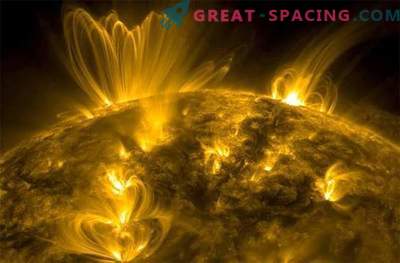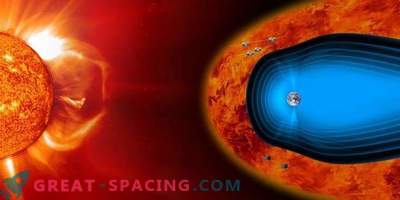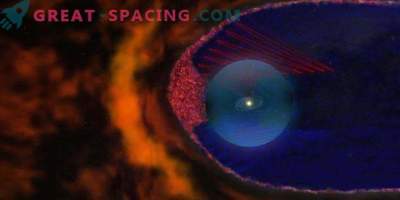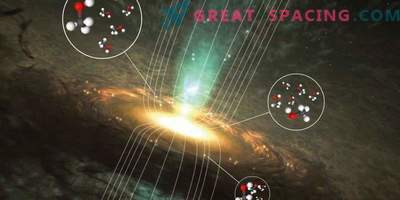
Artistic vision of the complex environment of the Martian magnetic field. Yellow arcs - lines of the solar magnetic field, spreading stellar wind. Blue - Martian surface magnetic fields, white - activity adjustment, and red - reconnected magnetic fields
A new analysis from MAVEN shows that the Red Planet has an invisible magnetic tail, twisting due to contact with the solar wind.
The MAVEN spacecraft is located in the Martian orbit, collecting information about how the Red Planet managed to squander most of the atmospheric layer and water, turning from a potential source of life into a dry and frosty desert. Perhaps the process of twisting the tail could affect the destruction of the atmosphere.
Scientists say the Martian magnetic tail is unique. It does not resemble the situation of Venus or the Earth, but rather appears to be their hybrid. The process was called “magnetic rearrangement”. The model shows that this mechanism makes the magnetic tail curl up to 45 degrees.
Billions of years ago, the planet lost its global magnetic field and now has only remnants in certain territories. The tail is formed when the magnetic fields carried by the stellar wind combine with the fields built into the surface. The solar wind is a stream of electrically conducting gas moving at an acceleration of 1.6 million km / h. If the solar wind field is oriented in the opposite direction to the Martian surface field, then they merge in the process of magnetic rearrangement. This process could affect the pushing of the Martian atmosphere into space. The top layer has electrically charged particles (ions) reacting to electrical and magnetic forces. That is, the process of magnetic reconfiguration releases energy, which actively promotes ions in a planetary atmosphere into space.
Magnetic fields cannot be seen in direct observation, but they are available to the MAVEN overview. Scientists plan to use other tools on the device to make sure that the shielding particles are reflected in the same areas, and the magnetic rearrangement is involved in the loss of the atmosphere.











































